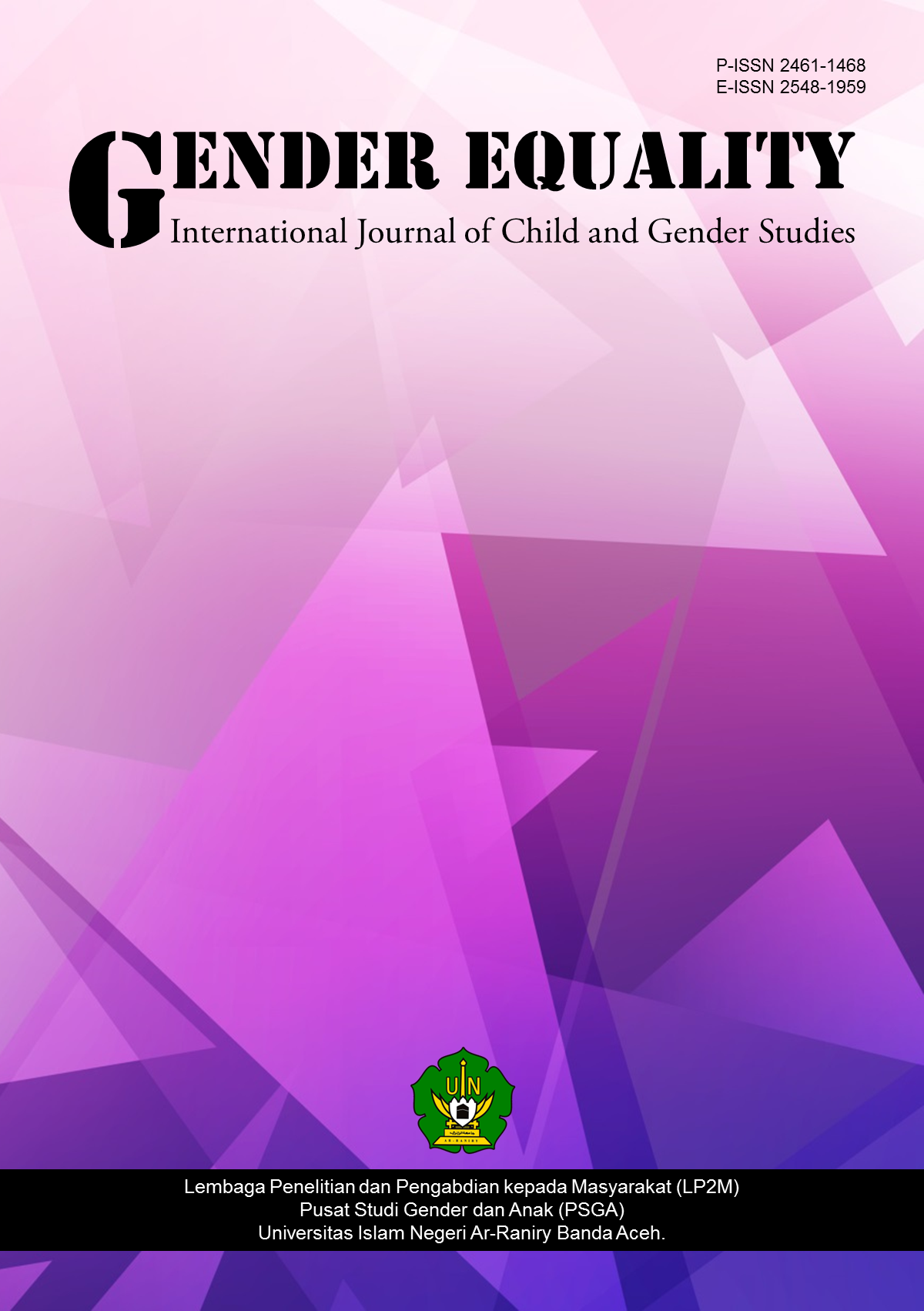REPRESENTATION OF WOMEN CLIMBER IN STUDENT ASSOCIATION FOR ENVIRONMENTAL AND ADVENTURE ACTIVITY
DOI:
https://doi.org/10.22373/equality.v6i1.6333Keywords:
Representation, Women Climber, MAPALA MarabuntaAbstract
This study aims to reveal the position of women climbers in the student association for Environmental and adventure activity of MAPALA Marabunta of Panca Marga University of Probolinggo. This study was conducted by using the method of descriptive qualitative with data collection techniques through observation, interview, and documentation. The results showed that in mountain climbing activities made by women climbers there is no difference between male and female climbers. This is in a manner conforming to representation view. Women climbers already have the ability and skills to Mountain climbing. The women climber is also equivalent to male climbers in general. So there are no points or ways in which male and female climbers are dissimilar. What distinguishes only their will, whether they want to practice and learn, if they want to practice and learn and take the opportunity already given, it will happen what is on want that is equality.
References
Administration, F. and D. (2015). Mobile medical applications: guidance for industry and Food and Drug Administration staff. Retrieved on February, 1, 2016.
Amal, A. A. (2018). Kesetaraan gender wanita pendaki Gunung di Jawa Timur studi tentang feminis eksistensialis Simone De Beauvoir. UIN Sunan Ampel Surabaya.
Ayu Dianingtyas, E. (2010). Representasi Perempuan Jawa dalam Film RA Kartini. Diponegoro University.
Bhandari, S., Zhang, X., Cui, C., Liao, S., Peng, Y., Zhang, H., … Wu, T. (2015). Genetic evidence of a recent Tibetan ancestry to Sherpas in the Himalayan region. Scientific Reports, 5, 16249.
De Beauvoir, S. (1989). The Second Sex. 1949. Trans. and Ed. HM Parshley. New York: Vintage.
Essed, P., Goldberg, D. T., & Kobayashi, A. (2009). A companion to gender studies (Vol. 26). John Wiley & Sons.
Haig, D. (2004). The inexorable rise of gender and the decline of sex: Social change in academic titles, 1945–2001. Archives of Sexual Behavior, 33(2), 87–96.
Hall, S. (1997). The work of representation. Representation: Cultural Representations and Signifying Practices, 2, 13–74.
Healey, J. F., Stepnick, A., & O’Brien, E. (2018). Race, ethnicity, gender, and class: The sociology of group conflict and change. Sage Publications.
Ikhsan, M. Z. (2014). Kiprah Pendaki Perempuan Di Unit Kegiatan Mahasiswa Pecinta Alam Wanala Universitas Airlangga Surabaya Dan Relevansinya Dengan Feminisme. UIN Sunan Ampel Surabaya.
Judith, B. (1999). Gender trouble: feminism and the subversion of identity. Routledge.
Killermann, S. (2015). Understanding the Complexities of Gender: Sam Killermann at TEDxUoflChicago. YouTube. Retrieved, 26.
Krijnen, T., & Van Bauwel, S. (2015). Gender and media: Representing, producing, consuming. Routledge.
Lindsey, L. L. (2015). Gender roles: A sociological perspective. Routledge.
Money, J., & Tucker, P. (1975). Sexual signatures: On being a man or a woman.
Mulia, S. M. (2003). Keadilan Kesetaraan Gender Perspektif Islam. Jakarta: Lembaga Kajian Agama Dan Gender.
Nadal, K. L. (2017). The SAGE encyclopedia of psychology and gender. SAGE Publications.
Nasaruddin, U. (1999). Argumen Kesetaraan Jender; Perspektif Al-qur’an. Jakarta: Paramadina.
Ogwu, E. (2016). The Native Cultures on Student Discipline in School, Nigeria. Jurnal Ilmiah Peuradeun, 4(2), 195-204. doi:10.26811/peuradeun.v4i2.97
Organization, W. H. (2015). What do we mean by “sex” and “gender.” World Health Organization. Http://www. Who. Int/gender/whatisgender/en.
Pokorny, J. (1969). Indogermanisches etymologisches wörterbuch (Vol. 2). Francke.
Salime, Z. (2011). Between feminism and Islam: Human rights and Sharia law in Morocco (Vol. 36). U of Minnesota Press.
Santrock, J. W. (2011). Psikologi Pendidikan Edisi Ketiga Buku Kesatu. Jakarta: Salemba Humanika.
Sastha, H. B. (2007). Mountain climbing for everybody: panduan mendaki gunung. Hikmah.
Surah An-Nahl [16] verse: 58-59.pdf. (2019). Retrieved August 28, 2019, from https://quran.com/16
Tim Penyusun, K. (2008). Kamus Besar Bahasa Indonesia. Balai Pustaka: Jakarta.
Udry, J. R. (1994). The nature of gender. Demography, 31(4), 561–573.
Verlo, M. (2015). Religion, Church, Intimate Citizenship and Gender Equality. Jurnal Ilmiah Peuradeun, 3(1), 55-76.
Wulan, I. S. (2012). Parameter Kesetaraan Gender Dalam Pembentukan Peratutan Perundang-Undangan. Jakarta: Kementrian Pemberdayaan Perempuan Dan Perlindungan Anak, Cetakan Ke-2.
Yudkin, M. (1978). Transsexualism and women: A critical perspective. Feminist Studies, 4(3), 97–106.
Downloads
Published
Issue
Section
License
GENDER EQUALITY: International Journal of Child and Gender Studies allows the author(s) to hold the copyright and to retain the publishing rights without restrictions. Authors who publish with this journal agree to the following terms:
- Authors retain copyright and grant the journal right of first publication with the work simultaneously licensed under a Creative Commons Attribution License that allows others to share the work with an acknowledgment of the work's authorship and initial publication in this journal.
- Authors are able to enter into separate, additional contractual arrangements for the non-exclusive distribution of the journal's published version of the work (e.g., post it to an institutional repository or publish it in a book), with an acknowledgment of its initial publication in this journal.
- Authors are permitted and encouraged to post their work online (e.g., in institutional repositories or on their website) prior to and during the submission process, as it can lead to productive exchanges, as well as earlier and greater citation of published work.



